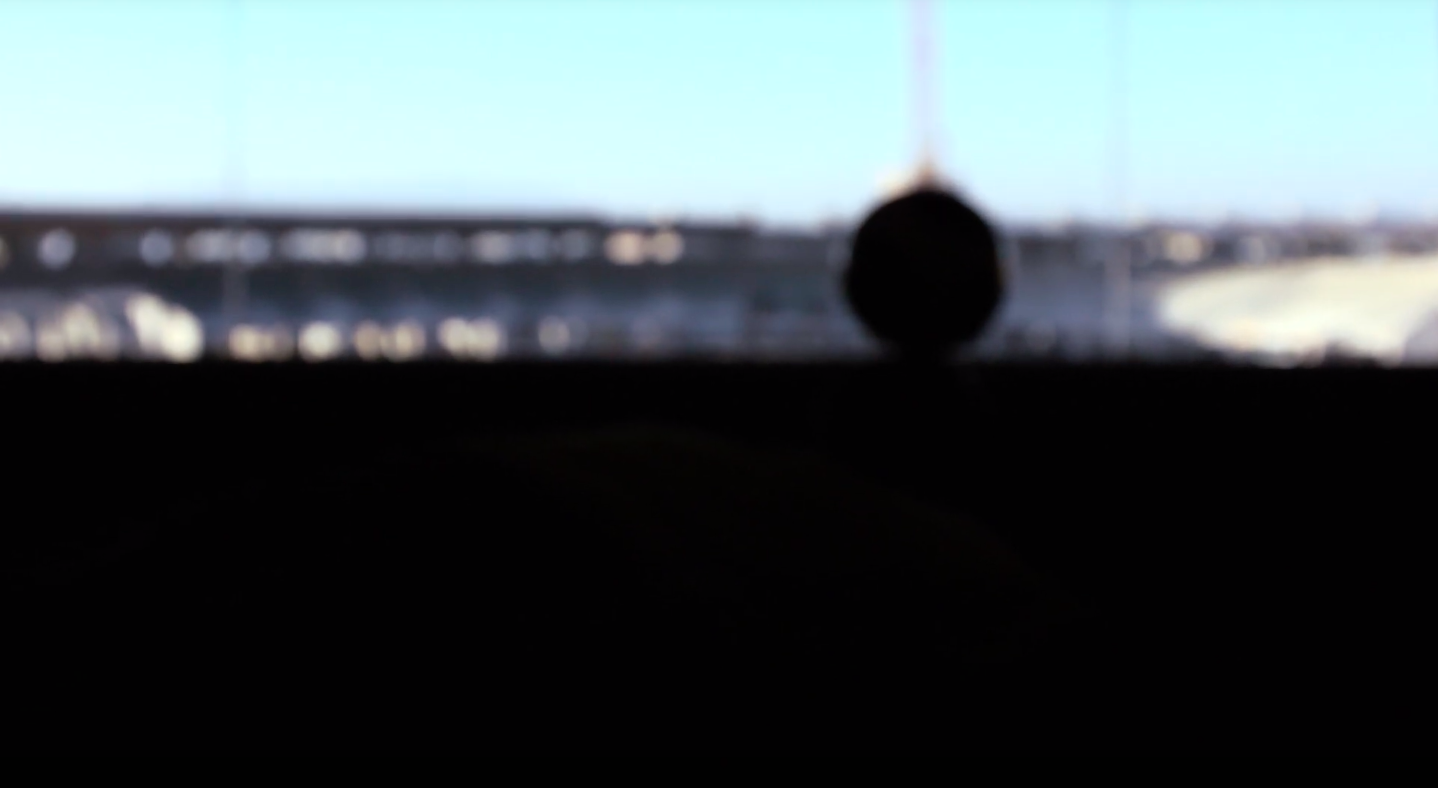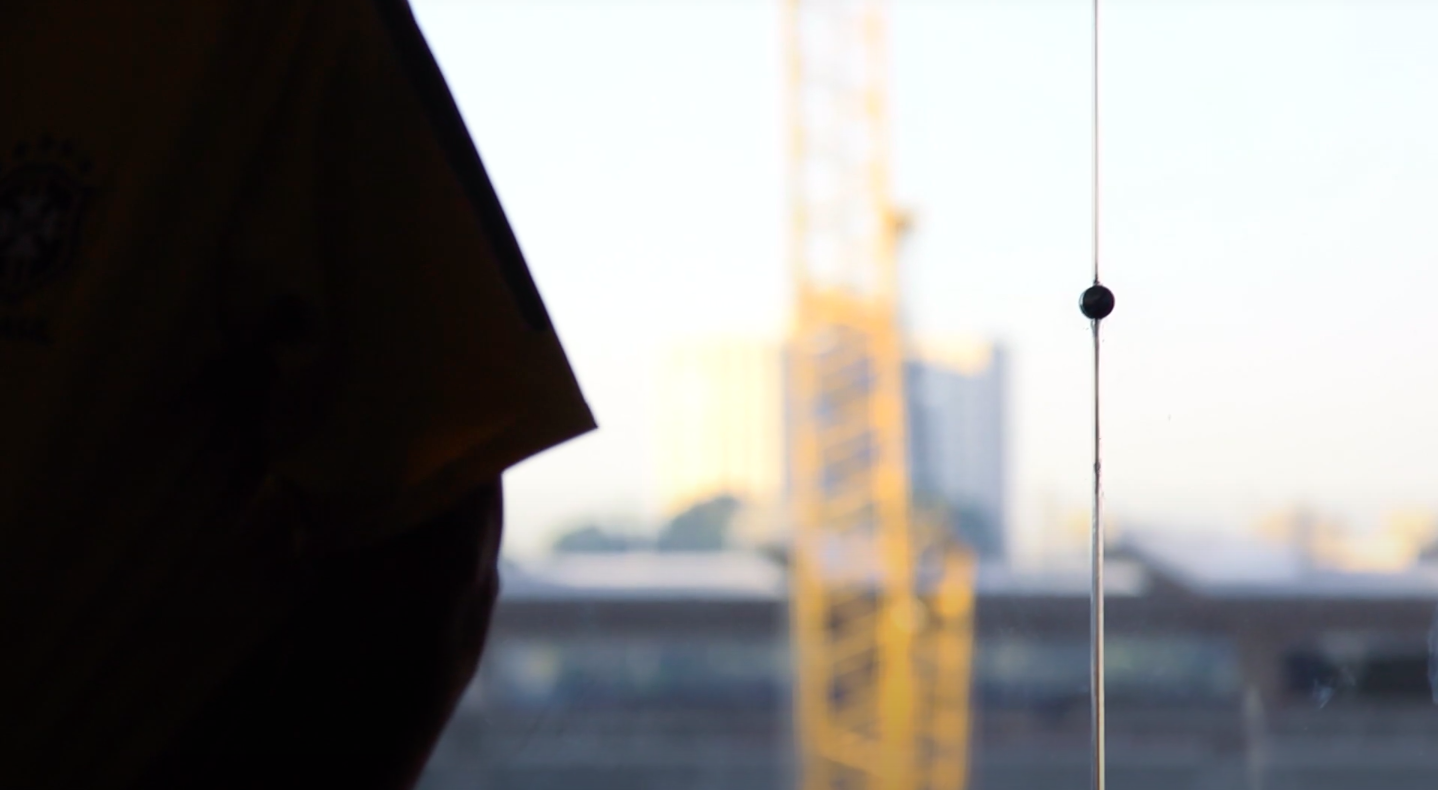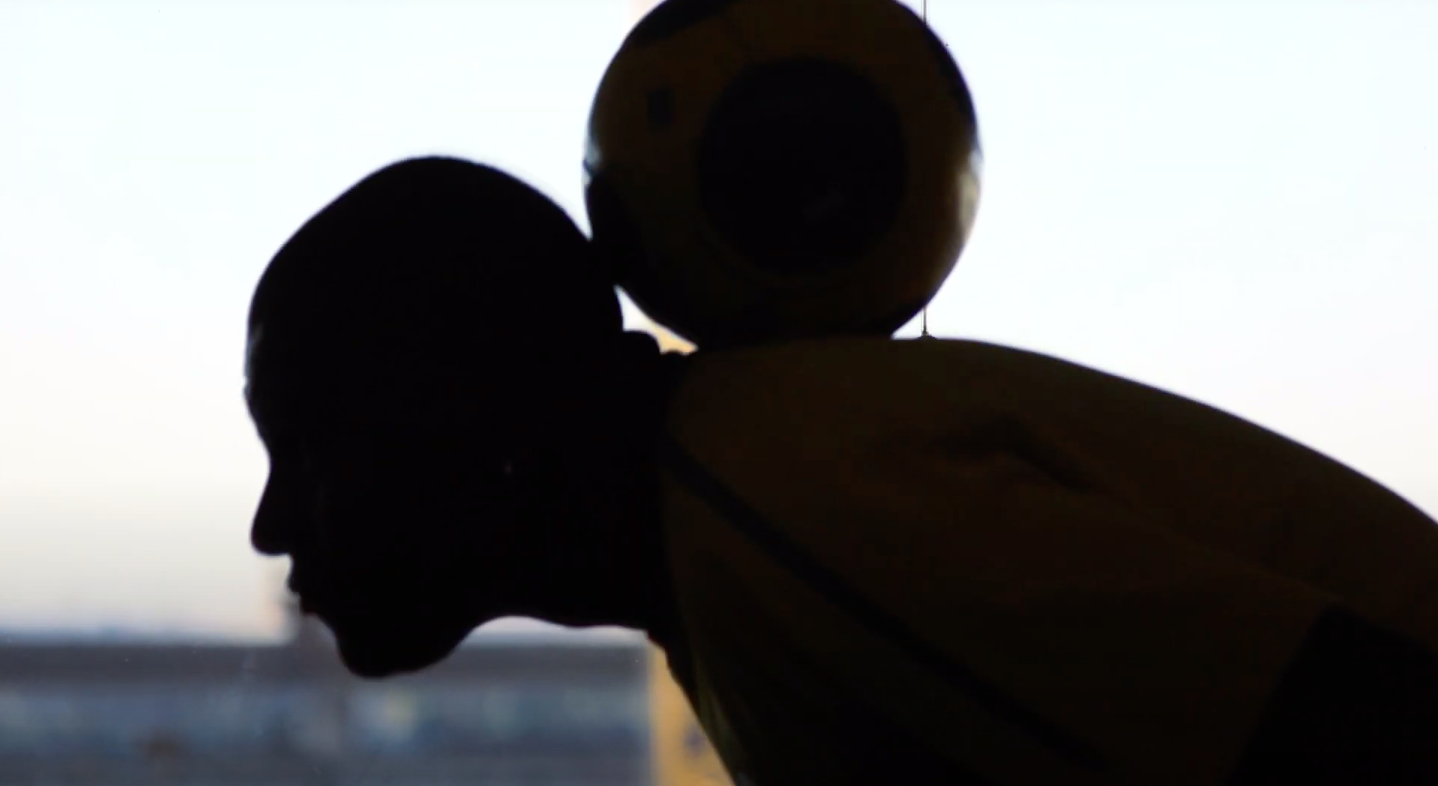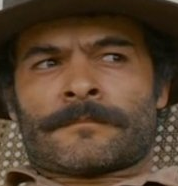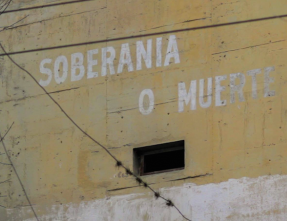Images that haunt (II)
The effect of the pandemic on Brazilian short films
Andréa França et Patrícia Machado, enseignantes-chercheuses à l’université catholique de Rio de Janeirio (PUC-Rio), nous ont confié le second volet d’une recherche sur le cinéma aux prises avec l’actualité brésilienne, commencée en 2019 sous le titre « Imagens que assombram » (« Les images qui hantent »). Le premier, publié sur le site [Cinetica->http://revistacinetica.com.br/nova/impeachment-andrea-patricia/
], portait sur la destitution de l’ancienne présidente Dilma Rousseff (Parti des travailleurs) et sur la façon dont le cinéma brésilien contemporain s’est saisi de ce thème pour agir au présent sur l’histoire en train de s’écrire. Le deuxième temps de ce travail consiste en l’analyse de courts métrages sur la crise sanitaire et sur sa gestion par le gouvernement bolsonariste. Il faut souligner la nécessité d’un tel travail de réflexion, mais aussi son caractère urgent, et risqué — ne serait-ce que parce qu’il exige une prise de position théorique et critique vis-à-vis d’un corpus récent et fragile, dans un contexte politique particulièrement difficile.
In the short film A vida é urgente (2020, Yasmin Thainá), we see men and women whose black bodies are individually confined in computer screens. The bodies look directly at the camera, in silence, and breathe heavily. They inhale and exhale for almost 9 minutes. The short film was produced in the first year of the novel Coronavirus pandemic in Brazil and after the murder by asphyxiation of George Floyd, in the US. What does it mean to be under a lockdown? Or rather, what does it mean to be locked down ? How does confinement affect the individual and collective body ?
This article makes the risky experiment of resorting to a few short films and audiovisual experiments to reflect on the dramatic events seen in Brazil just as they are taking place. We refer to the tragedy that the Coronavirus pandemic has been inflicting on the country, but also to an authoritarian agenda in place that has been putting into practice what we can call a policy of death. Jair Bolsonaro was inaugurated president in 2019 in a context of great political tension: his left-leaning opponent, former president Luiz Inacio Lula da Silva (Lula), was the front-runner in the election polls but was arrested and prevented from contending for office. We have stated that this article makes a risky experiment due to the urgent nature of this mode of reflexive intervention and, for that very reason, it takes the form of an essay and has no exhaustive theoretical claims.
In the previous article, “[Images that haunt – the effect of the impeachment on Documentary filmmaking->http://revistacinetica.com.br/nova/impeachment-andrea-patricia/
]” (2019), we discussed the ex-President Dilma Rousseff’s impeachment in the light of Brazilian films that focus on this theme to investigate how they see the political crisis over the last few years. This article differently examines how Brazilian short films on the Covid-19 pandemic narrate the feelings, fears and thoughts on the new configuration of the world.
The idea is first to highlight aspects of the short films Vai passar (2020 Cristina Amaral) and Cretinália (2020, Jorge Furtado), made in the context of the pandemic, to question how they elaborate about the political phenomenon of Bolsonarism [the government of President Jair Bolsonaro] whose characteristics appear to have peaked during the spread of the new Coronavirus. Secondly, to analyze the archival sound and visual footage in Mais triste que chuva no recreio de colégio (2020, Lobo Mauro) and also the recording made by a cell phone camera that circulated massively on social media at the beginning of the pandemic. A young black Haitian at the access gate of the Palacio do Alvorada [the president’s official residence] yells at the country’s leader: “Bolsonaro, it’s over. You are not president anymore, you have to give up… you are spreading the virus and you are going to kill the Brazilians”. This recording is reiterated in the short film.
In the third movement, which concludes the article, we subscribe to the hypothesis that the cinematographic gesture is always fragile in the face of historical events (Veyne, 1971; Deleuze, 1974). It does not matter whether the films are short or feature length, experimental, autobiographical, expository, confessional. The impeachment process of the ex-president of the Workers’ Party (Dilma Rousseff), in 2016, and its political developments remains an event that has spawned a series of films like no other in the country. The technological variety of portable cameras, cell phones, drones, diverse resources for capturing private messages has certainly made the making of these films easier. The context of hyper-visibility of social media is also convenient, owing to the diversity of found footage. How can be done for there to be a film in the midst of the massive accumulation of images, information, news? How can we propose new narratives amid an excess of stimuli and a void of perspectives? There are documentaries – The Edge of Democracy (Petra Costa, 2019), Excelentíssimos (Douglas Duarte, 2018), The Trial (Maria Ramos, 2018), The Wall (Lula Buarque, 2017), among others – that seek to show how we arrived at the current crisis. They reveal a scenery of collusion between economic, media, legal, political powers and invite us to see the limits of what they show. In any case, the question remains as to how the historical event is articulated – in its uniqueness, disturbance, unpredictability – with the narratives of the crisis (be it the ones seeking definite outlines or those seeking dispersion). How do cinematic narratives of the Impeachment build bridges between the past and Bolsonarism’s chaos ?
Personal objects, utensils of the domestic environment, the window and its landscape, the body of the filmmaker in the scene, kinetic aspects of the house, all are visual very present motifs in the experiments carried out for the “Programa Convida Artistas/Quarentena”, at Instituto Moreira Salles. A vida é urgente (Yasmin Thainá, 2020), Vai passar (Cristina Amaral, 2020) and Cretinália (2020, Jorge Furtado) are short films pertaining to the website’s concept. In the latter two, in a kind of monologue, the filmmakers narrate in first person their feelings and thought on the new configuration of the world presented by the pandemic. The images and sounds arrive through the window of the house or through the TV and computer screens.
In Vai passar (5’30”), Cristina Amaral’s voice ponders on the first months of lockdown, the new routine and the uncertainties about the future. With her cell phone camera, she records her domestic environment without her body appearing on the scene. We see the view from the window, the plants in the garden, the birds. “After 5 months of a pandemic, the more than 100,000 dead are just numbers (…) our shamans have been warning us for a long time that we need to reconnect with nature (…) the world stopping a bit was enough so that the Himalayan mountains were visible, so that little fish could be seen in the murky waters of the Venice canals. It was enough to have 50% of the population of São Paulo stay at home for a blue sky to appear as I have never seen before”.
Led by a sweet and slow-paced voice, we move through the garden of the house. There are no people and no faces. What does exist is nature at risk, which renews itself with the distance of men. The disturbing noise of machinery engines, a passing helicopter and a siren announce the tragedy to come. “Brazil has been recklessly unscrewed”. From the peaceful images and sounds of the domestic surroundings, we go to the TV screen at the end. Shots of smoke, debris and the sounds of an explosion. “It was not for lack of warning” says the voiceover. In addition to the human and health catastrophe that Brazil has faced since then, there is also a political catastrophe. The final plan announces devastation. Ending the short with the explosion in slow motion on TV (Beirut?) aims to emphasize the meaning of the sentence “recklessly”; it aims to reveal the crisis in which the country plunged under a government that refuses to govern because it rejects politics and the political system, considered “corrupt”.
In Cretinália (7’12”), filmmaker Jorge Furtado, sat in front of his computer, speculates aloud as to what art can do in times of catastrophe (the plague). Between the bookshelf and the images of Albert Camus on the computer screen, Furtado reads an excerpt from the speech of the French-Algerian writer when he was bestowed the Nobel Prize for Literature at the age of 44. “The artist is forged in this incessant coming and going from himself to others, halfway between beauty, without which he cannot do, and the community, from which he cannot tear himself apart”. Furtado wanders between the bookcase, the window of the house and a variety of images on his computer screen, speculating about lockdown and the state of things in Brazil. “We are alone, the plague and us. Inside, the books. On the other side of the glass, the country and the plague”. The plague is Bolsonaro. The president who pushes medicine against Covid-19 that doctors say doesn’t work. The president who raises the medicine as if it were a trophy. “What is the logic ?” He asks. “None. There is no logic”.
He flicks through the pages of Lewis Carroll’s The game of logic. He reads the book’s epigraph aloud and investigates its authorship. It is a fragment of Alexander Pope’s satirical-epic poem, The Dunciad. During the eighteenth century in England, a Vile King had science imprisoned, art exiled, logic muzzled and, with his infinite stupidity, dragged everyone else in his wake. The analogies seem evident. Furtado turns the poem into Portuguese and puts it on his Blog, writing: “It could be a rap song”. The next day, an artist turned the lyrics of the poem into music. The rap song is ready – and so is the short film. In the ironic similarity between distant times and places (Brazil-England), we discover the repetition of the absurd, the madness, the inaptitude, the shame. The crisis of historical sense and the malaise in Bolsonarist Brazil are both conspicuous. “120 thousand deaths. How many could have been avoided ?” For the questions that Furtado asks, there are no answers. There is no explanation for the government’s policy of death, there is no logic to the images of hundreds of graves dug across the country, side by side. There is shame.
In Furtado’s short film, Bolsonarism is the ruin of reason and logic. It is a madness that sows chaos, disease and the night carcass. Dog-face-Bolsonaro and his four dog-face-sons illustrate the rap lyrics in the form of a collage from the universe of memes and gifs. The short films O que há em ti (16’58”) and Mais triste que chuva no recreio de Colégio (14’15”), on the other hand, make a leap into the past. The idea is to show that the pandemic would not reach the dimension of a sanitary, political, economic and social tragedy were there not an authoritarian agenda underway; an agenda that affirmatively trivializes deaths and naturalizes the cleavage between valuable lives, lives undergoing processes of devaluation and disposable lives; Bolsonarism appears in these shorts as an ethos that is based on patriarchal, Christian, entrepreneurial values rooted in whiteness, hence its racist and discriminatory character. Pictures that went viral on social media show Bolsonaro and his supporters holding guns; the thumb’s Bolsonaro combined with the index and middle finger, mimicking a gun[11][11] Actually the thumb’s Bolsonaro combined with the index and middle finger was the gesture that symbolized Brazil’s President’s electoral campaign.; they show, during rallies, Bolsonaro carrying very young children on his arms, smiling and teaching them how to reproduce the gun sign; the Brazilian flag behind Bolsonaro in such a way that we can read the slogan on it. The green and yellow flag has “Order and Progress” written on it, inspired by Auguste Comte’s motto of positivism[22][22] It is a much-loved slogan of the Brazilian army which proclaims itself to be a force which brings order when the country is in trouble..
In these short films we examine, the gesture of using found sound and visual footage that circulate in different social media triggers recent memory and counter-narratives to the project of destruction. Lobo Mauro draws archival footage from a project in Brazil that does not come to completion. The renovation of the Maracana football stadium, which consumed millions from the public coffers, was to fulfill the promise of a prosperous, united and happy Brazil through football. It was to fulfill the developmental promise of the most violent period in the Brazilian military dictatorship, the 1970s, when the military praised the joy provided by the victories of the Brazilian soccer team and hid the tortures and murders of opponents of the regime. It would also fulfill the propagated identity of the Brazilian, so well analyzed by the anthropologist Darcy Ribeiro when he points out that the homeland of the common Brazilian is football. “It is the moment when Brazilians cry, feel attached, feel that they have a homeland”, he says in an interview to TV Cultura, during the making of the documentary about his book, O povo brasileiro. To evoke this desire for a homeland and a specific idea of what it would be like to be Brazilian, the short recovers three sound files : the commentary of Brazil’s 7-1 defeat to Germany at the 2014 World Cup, speeches by congressmen in the vote for President Dilma Rousseff’s impeachment, in 2016, and the announcement of labor reform by former President Michel Temer, in 2017.
While listening to excerpts from the neoliberal labor reform that took away Brazilian workers’ rights and encouraged precarious relations between bosses and employees, we watched workers and machines in action at the Maracana stadium refurbishment between 2010 and 2013. We also hear excerpts from the speeches of the congressmen in the historical Congress vote for Impeachment, where Christian, private property, traditional heterosexual family values are proclaimed in an authoritarian and sexist manner. Images and sounds of different temporalities that, associated in the editing process, show the farce of the promise of a “Brazil that moves towards modernity”, as Michel Temer repeats in a speech. It is a wish for a homeland doomed to fail.
O que há em ti (2020) sets off from a recording made by an anonymous cell phone that circulated massively on social media. The president who refuses to talk or to answer questions from the press, who only addresses his supporters, appears at the entrance gate of Palacio do Alvorada, his official residence, in front of a young black man, a Haitian, who addresses him. “Bolsonaro, it’s over! You are no longer a president, you need to give up (…) you are spreading the virus and you are going to kill the Brazilians”.
The difficulty in understanding what the man is saying, due to the accent and what is said in an accusatory way, silences the President and puts him in the place of listening. For a few seconds, Bolsonaro seems perplexed by the young man who confronts him, disagreeing with the group of supporters of the president shouting “myth!”. The disjunction between what is said and what is understood generates bewilderment (in the President and the viewer) that is reiterated throughout the short. That recording’s footage is used and the scene is reframed in different ways. The perplexity favors repetition and the accusation of the Haitian then becomes a kind of mantra that insists on the desire (again, failed) of so many Brazilians. “Bolsonaro, it’s over”. The present is condensed into the “piece that encapsulates its time”, as researcher Nicole Brenez points out in a letter to the filmmaker, published in a report by Eduardo Escorel for Revista Piauí[33][33] O que há em ti e o que está por vir, Eduardo Escorel, Revista Piauí, September 2020. https://piaui.folha.uol.com.br/o-que-ha-em-ti-e-o-que-esta-por-vir/
. The short “comes directly from your anger [Carlos Adriano’s], indignation, outrage”.
Produced under the urgency of so many ambivalent feelings (indignation, anger, impotence, shame, disgust, sadness, mourning), the short film helps us understand the configurations of the Bolsonarist policy of death that intensifies with the pandemic; a policy where some lives have worth, some that almost have worth and lives that are worthless. By using the recording of the Haitian man at different moments in the short, Carlos Adriano builds a bridge between what is announced as the future and what has been done in the past. It uses historical archive footage of the massacres that took place in the favela of Cite Soleil, in Port-au-Prince, in 2005. These are images of bodies cornered in poverty-stricken streets, mutilated or already dead; images slowed in the editing process that call out for us to see black lives as disposable and precarious lives.
In the early hours of a July day in 2005, troops from the UN Stabilization Mission in Haiti (Minustah), commanded by the Brazilian Army, carried out a “pacification” operation in the largest slum in the Haitian capital, Port-au-Prince. According to witnesses, about 300 heavily armed men invaded the neighborhood and murdered 63 people, leaving dozens injured. There are Brazilian historians who, based on research and analysis, denounce the backstage activity of this Mission led by Brazil (Lilia Schwarcz, 2019; Marcelo Silva, 2017). It was an intervention carried out within the framework of legal international relations. However, several Haitian leaders, intellectuals and politicians have already warned that, in that context, Haiti did not need peacekeepers because there was no war. The audiovisual records of the massacre in Port-au-Prince are repeated throughout the short and echo the sentences addressed to the President by the young Haitian.
We experience the inconvenience of not immediately understanding the association. Only at the end do we get the information that General Augusto Heleno, at the time head of the Peace Mission, is today the chief government minister of Bolsonaro’s Institutional Security Office. Other members of the Mission were to hold government positions as ministers and secretaries. Then we understand that part of the Bolsonarist government core was active in Haiti and was the subject of a complaint made to the Inter-American Commission on Human Rights (of the OAS – Organization of American States). The Mission self-assigned the task of bringing Haiti out of “chaos”, but it became itself a force of instability and violence.
The practice (of interventions that are violent and without specific local strategies) was perpetuated when the military that participated in the Mission led the Federal Intervention in Rio de Janeiro, created to fight crime (in 2018). The army occupied poor communities in the city and the result was an increase in the number of murders in military and police operations. O que há em ti does not bring this information, but Caetano Veloso’s song, “Haiti” (from the album Tropicalia, by Caetano and Gilberto Gil, from 1993), sums up a feeling. “Nobody, nobody is a citizen. Haiti is here. Haiti is not here”. Through Haiti, Brazil sees itself as a reflection in the mirror and finally the Haitian’s threatening speech to the President takes on meaning. Haiti is Brazil. Haiti is Latin America. Haiti is us.
In the short films by Yasmin Thainá, Jorge Furtado and Cristina Amaral, human bodies are prevented from circulating, from joining other bodies and therefore are absent from the public world. The concepts put citizenship life and art into question, in a context where free movement and mobility are impeded; they also question for new ways of dealing with perplexity – owing to the virus, Bolsonarism and the country. Perhaps Furtado, inspired by Camus, is right: to feed his art and his difference, the artist needs to confess his resemblance to everyone. We believe that extracting popular memes, audios, videos and gifs from social media in order to relate that footage (create analogies and comparisons) in the editing process is not only to scramble the public and private domains, but also to restore the sense of community. Such is the gesture of Lobo Mauro, Jorge Furtado and Carlos Adriano when they draw from images and sounds present in the universe of social media.
These shorts, in our view, further the symbolic, political and historical issues of Brazilian documentaries that investigate the political crisis brought about by the impeachment of President Dilma Rousseff, in 2016. They propose to reflect on the consequences of a process that stems from the crisis brought about by the impeachment. In the article “Images that haunt – the effect of the impeachment on Documentary filmmaking”, we investigated this event in the light of Brazilian films that focus on this theme. We explained that the massive street demonstrations, which began in 2013, were a fundamental event in Brazilian history. Popular in nature, those demonstrations made clear the level of social frustration with a perspective of enrichment, of democratic participation, of social justice that did not occur with the governments of the Workers’ Party (PT). We argue that the political forces of the left, then in power, were paralyzed in the face of these demonstrations that threw into the streets both those willing to go further in social changes, and the conservative sectors of the country. Some documentaries – The Edge of Democracy (2019, de Petra Costa), Excelentíssimos (2018, de Douglas Duarte), The Trial (2018, de Maria Ramos), The Wall (2017, de Lula Buarque), among others – investigate the unprecedented political crisis and, in the article cited, we analyze their different language procedures and the effects of meaning achieved.
The rejection of politics deepens in 2014, in the wake of the demonstrations for and against public works for the World Cup. It also contributes to the worsening of the economic crisis, in addition to the inauguration of the activities of Operation Lava-Jato, which establishes an undeniable link between politics and corruption, repeated systematically by conventional media and social networks. Dilma Rousseff’s tight victory in the 2014 presidential elections led the Brazilian Social Democracy Party (PSDB) to question the validity of the elections, to call for their annulment and to postulate impeachment as an alternative. Such positions were being reproduced by media campaigns that stimulated the collective feeling of indignation against corruption, channeled mainly against the Workers’ Party (PT). As of March 2015, the country’s streets are taken over by thousands of protesters dressed in the yellow-green jerseys of the Brazilian soccer team, enraged by the allegations of corruption linked to the PT, now converted into a (updated) symbol of the old red danger of communism.
Given the historical images of the people occupying the National Congress, setting fire to the Itamaraty Palace, taking to the streets across the country, the conservative and sexist vote in Congress for the impeachment of President Rousseff – filmmaking confesses the insufficiency of images to render legibility to what happened and its dark developments. And because they are partial and incomplete, the films also evince the limits of the gesture of showing. It is not for nothing that everyone is faced with the first difficulty of defining where the historical narrative of the impeachment begins and ends.
The Trial focuses on the period between the vote to start the impeachment process in the House of Representatives and the termination of Dilma Rousseff’s mandate. The film focuses on the event in the Federal Senate. It does not seek its historical origins, nor does it exceed its limits. The viewer misses, within the cut proposed by the film, the meetings of the right-wing parties and the ex-president’s wait for the final verdict. Excelentíssimos seeks in the 2014 elections the source of the malaise that will cause the political split and the beginning of the process that ends in Dilma’s dismissal. The documentary ends with the arrest of part of the politicians who colluded for it. However, it does not investigate how the history of the dismissal of the former president took place and the role played by the federal representatives highlighted in the film in the impeachment. The Wall explores the ideological division of society (the reds versus the yellow-greens) through the country’s streets during 2016, emphasizing the construction of the wall at the Esplanada dos Ministérios to set impeachment supporters and opponents apart. The film is less interested in the institutions of power than in the demonstrators taking to the streets; it is the only one that ventures relationships between the emergence of the extreme right in Brazil and the new Islamophobic and populist rights in the USA and Europe from the perspective of the streets. It takes risks, but it does not deepen said relationships. For example, how do walls enhance the militarization of public spaces? How do they fuel deadly forms of policing? We wish the film raised those issues.
The edge of democracy is the most ambitious in the search for the origins of what happened. It makes flashbacks that take us to the 1950s, the period when the federal capital, Brasília, was built. Even with this vast historical approach that focuses on the historical organization of political and economic power in Brazil, the film ignores the countless rebellions and traditions of struggle that exist (peasants, indigenous people). So something is missing from the documentaries about the impeachment. Let us think about the presence of this process – be it to condemn or to glorify it -, the lack of definition of its limits contributes to its staying power. When exactly does the ex-president’s removal process begin ? Was it in the 2013 demonstrations ? Was it in the conciliatory solution for the military dictatorship past, that recent Brazilian cinema had been formulating ? Everything points to the fact that an overcoming of the dictatorial past did not happen and it is as if its values – those of nationalist patriotism, of the arms race, of anti-left conservatism – had returned. It is this misfortune that haunts us today, in 2021. That blurring of boundaries thus seems to testify to the complex relationship between historical event and cinema.
In the face of the monumental emptiness of political life in the country, the slow degradation of public institutions, the exhaustion of the left and political actors, the films The Trial, The Wall, The edge of democracy, Excelentíssimos (and others like Já vimos esse filme, 2018, de Boca Migotto, O golpe em 50 cortes ou a Corte em 50 golpes, 2017, by Lucas Campolina point to the growing split between authoritarian populism and the distant horizon of social justice. Historically, such films have witnessed the emergence of ghosts linked to the restoration of virile masculinity, landlord illusions, Christian ideals, torturers; they are also symptomatic of the brutal void of perspectives and new narratives. Cinematographically they reveal, in the variety of documentary practices (observation, first-person cinema, interviews, visual and sound archives), that it is not this or that language procedure that brings the film closer to the historical event; the challenge is to exhibit the contradictory forces that underpin both the film and the event.
In the context of the pandemic, the challenges of exhibiting these contradictions are even greater. Confined to their apartments, separated from the social world and with life at risk owing to the government’s inefficiency in fighting the Coronavirus, the possibilities of filming, producing meetings, circulating in the streets are very restricted. When creating short narratives and putting them on the online circuit, these filmmakers act as witnesses to a historic experience of devastation. Such proposals are brief interventions in the urgency of a dark present. Offering no answers or formulas as to how to lead a better life in this world, the shorts only return the feeling of bewilderment and illuminate the bridges between the past and the present. In different ways, they ask questions, express doubts and evince the feeling of helplessness in the face of the void of perspectives. The impossibility of imagining a future calls for the search for images of the present and the past: how did we get here, where is this going to end, what is the devastation policy for ? After all, who is/will be able to breathe in Brazil ?
Bibliography :
DELEUZE, Gilles. Lógica do Sentido. São Paulo: Perspectiva, 1974.
ESTEVES, Antonio. Imagens e jeitos do caribe em Caetano Veloso. Revista Brasileira do Caribe, Sao Luis, v. 9, n. 17, p. 197-234, 2008.
RIBEIRO, Darcy. O povo brasileiro: a formação e o sentido do Brasil. Sao Paulo: Companhia das Letras, 1995.
SCHWARCZ, lilia. Sobre o autoritarismo brasileiro. Sao Paulo: Companhia das letras, 2019.
SILVA, Marcelo. O Haiti é aqui: reflexões identitárias na letra da canção de Caetano Veloso. Litterata, Ilheus, v. 7, p. 8-20, Jan.-Jun. 2017.
VEYNE, Paul. Comment on Écrit l’Histoire. Paris: Seuil, 1071.
Films online :
Cristina Amaral, Vai passar, 2020.
Jorge Furtado, Cretinália, 2020.
Lobo Mauro, Mais triste do que chuva no recreio do colégio, 2020.
Yasmin Thainá, A vida é urgente, 2020.
Illustrations :
Mais triste do que chuva no recreio do colégio (Lobo Mauro, 2020).
